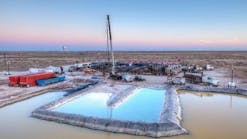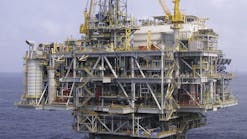Philip J. Angevine, Thomas F. DegnanMobil Technology Co. uses six strategies in its hydroprocessing catalyst selection and development programs:
Mobil Technology Co.
Paulsboro, N.J.
- Catalyst purchase from merchant
- Custom catalyst tailoring by vendor
- Collaborative catalyst design
- Toll manufacture of catalyst
- Manufacture of in-house catalyst for licensing
- Manufacture of in-house catalyst for own use.
In most cases, external selection and purchase are the preferred routes. When there is a clear technology advantage, however, internal catalyst and process development is pursued. These strategies provide a competitive advantage to Mobil while allowing advances in hydroprocessing catalyst technologies to progress to the market.
In the current challenging economic environment, refiners must select the optimum commercial catalyst for each process. Even greater competitive advantages can be obtained through the development of proprietary catalysts, either solely for internal use or for both internal use and licensing. The insight gained through in-house catalyst research and development programs often supplements the knowledge needed to make good catalyst choices. That is, the same evaluation techniques used in catalyst development can be used in the selection of commercially available (i.e., commodity or merchant) catalysts.
Mobil is one of a few petroleum companies that both manufactures and purchases hydroprocessing catalysts. The decision whether to make or buy any catalyst is dictated by a number of factors including proprietary position, pricing, and catalyst-manufacturing capabilities. This is particularly true in the case of hydroprocessing catalysts where both product diversification and the number of manufacturers are significant.
Conducting parallel proprietary catalyst development and commodity-catalyst evaluation programs has benefits and liabilities. The use of common evaluation equipment and methodologies can result in substantial cost savings.
This article provides an overview of how Mobil:
- Selects the optimal catalyst for its own use
- Decides whether to make, custom develop, or buy catalyst
- Manages external joint technology development activities
- Partitions the evaluation of merchant catalysts from its own internal catalyst research and development program.
Hydroprocessing encompasses a wide variety of hydrocarbon chemistries. Refinery hydroprocessing technologies can be lumped into the six classes shown in Table 1 [12,947 bytes].
This article is concerned mainly with the selection or development of hydrotreating, hydrocracking, shape-selective dewaxing, and isomerization catalysts.
Mobil's objectives By judiciously managing its catalyst selection and development programs, Mobil tries to maintain a competitive refining operating advantage by securing the optimal catalyst for each process. "Optimal" means one that produces the most economically attractive product slate for reasonably long cycle lengths.
In its own catalyst development programs, Mobil's objective is to develop step-out catalysts for its own use and ultimately for licensing to other refiners. Catalyst selection and development activities are conducted with nine Mobil Technology Co. principles (Table 2 [11,863 bytes]).
Principles 1-6 are the considerations in Mobil's decision to make or buy catalysts.
In recent years, Mobil, like a number of process licensors, has pursued alliances with other technology suppliers. In 1996, in an attempt to expand its hydroprocessing licensing business, Mobil formed an alliance with Akzo-Nobel Chemicals Inc., a hydroprocessing catalyst manufacturer, and M. W. Kellogg Technology Co., an engineering and construction firm. Another refiner, Fina Oil & Chemical Co., joined this alliance, called MAKF, in 1997. The purpose of this alliance is to create, enhance, commercialize, market, and license MAKF technologies. The broad field of these technologies is made possible by drawing together the talents of the diverse partners. The MAKF alliance is also a key factor in Mobil's process development activities.
Mobil uses a broad spectrum of strategies depending upon perceived competitive advantages, catalyst availability, ability to license, and catalyst cost. These strategies are summarized in Fig. 1 [72,068 bytes].
The more commodity-oriented the product, the more market available it is. Mobil's proprietary catalyst is tailored for certain refining processes and thus, is not a commodity. Merchant catalyst, on the other hand, is appropriate for applications that are less specialized.
The company's proprietary catalyst strategy adds value to the customer. It is, however, more expensive to manufacture. Thus, Mobil must consider the added value vs. the higher cost in deciding what catalyst approach to take.
Merchant catalyst purchase
Within Mobil, virtually all hydrotreating and some hydrocracking catalysts are purchased from the current lists of those marketed by commercial catalyst suppliers. While hydrotreating catalysts are compositionally similar, typically cobalt-molybdenum or nickel-molybdenum on an alumina support, commercial suppliers continue to improve performance, particularly hydrodesulfurization and hydrodenitrogenation activity, through their own research and development. There are several types of hydrotreating applications. Examples include distillate desulfurization, FCC feed pretreatment, first stage hydrocracking, naphtha hydrodesulfurization, gasoline hydrotreating, etc. Each process has different catalyst requirements. Since each unit is unique (different LHSV, temperature, pressure, and processing objectives), catalyst requirements will vary somewhat from unit to unit. However, the overall objectives are to maximize heteroatom removal effectiveness with the minimum amount of catalyst and to do so at the lowest overall process cost. In addition to catalyst cost, cycle length, hydrogen consumption and other factors must be considered.When a new catalyst is placed on the market and is reported to have performance advantages, Mobil often elects to certify this catalyst. To certify it, Mobil subjects it to a standard activity test with a series of several types of feeds. Based upon its performance, the catalyst is given a rank: 1 (top tier, preferred), 2 (middle tier, average), or 3 (bottom tier, inferior).
The most demanding applications (for example, low sulfur diesel manufacture) frequently require top tier catalysts. Less demanding processes (for example, naphtha pretreating) can use less-costly, lower-tier catalysts. As new catalysts reach the market, this tier system is continuously redefined. Usually only two to three catalysts are classified as top tier at one time. Because Mobil has an inventory of several million pounds of hydrotreating catalyst, it is critical to keep this tier information up to date to maintain a competitive advantage.
In addition to catalyst ranking, Mobil ranks each hydrotreating unit within its refining system according to severity of service. This is done in collaboration with refinery staffs and allows us to match the unit with the appropriate candidate catalyst-that is, "right process, right catalyst."
After their initial use and regeneration, catalysts may be selectively reused in similar service or they may be cascaded down into less demanding service. This approach allows Mobil to use a catalyst for as many as three to four times, albeit often in different applications, before it is returned to a catalyst reclamation company.
Catalyst properties, for example, crush strength, bulk compaction, particle length/diameter (L/D) ratio, L/D distribution, and contaminants, are scrutinized closely before reuse is recommended. Where there is little experience in regenerating the catalyst, real feed catalytic performance testing in pilot units is usually carried out.
Another approach to lowering catalyst costs that is being pursued by some Mobil refineries is the use of bulk purchases; that is, working with one catalyst supplier to satisfy all of Mobil's hydroprocessing needs.
The principle here is that bulk procurement often lowers the manufacturing costs of the catalyst supplier, who passes these cost savings to Mobil. One downside to the "single supplier" concept is that it may limit Mobil's awareness of catalyst advances by other suppliers.
Vendor custom tailoring
In some instances, it is desirable to work with a manufacturer to tailor or even to totally design a special catalyst grade for a single application. This approach is often used in hydrocracking, in which the potential economic uplift is substantially larger than in hydrotreating and can therefore justify the effort.Hydrocracking catalysts have three characteristics on which manufacturers work to improve: activity, selectivity, and stability. Types of hydrocracking processes include moderate pressure, high pressure, cascade, two stage, gasoline selective, and distillate selective. These many choices make the catalyst selection process far more complex.
Hydrocracking catalysts undergo a more extensive evaluation than hydrotreating catalysts. The catalyst is first "lined out" to the start-of-cycle temperature, which requires about 30 days. During this time, product selectivity and product quality are measured.
Since most hydrocracking catalysts require more than 1 year to reach end-of-cycle, an accelerated aging protocol is used-running at higher space velocities and at reduced hydrogen partial pressures.
Also, fundamental coking tests with model compounds give qualitative aging data. This has proven to be a satisfactory approach in differentiating high performance from average performance catalysts.
Vendor custom tailoring is "performance based." The vendor discusses performance issues (for example, naphtha selectivity, activity) and minimizes divulging any particulars about the catalyst formulation. In this manner, the vendor secretly guards the catalyst composition and method of manufacture. The main limitation of this approach is that improvements are frequently incremental rather than major. However, the catalyst development required often is minimal.
As an aside, Akzo Nobel's strong willingness to custom-tailor catalyst helped Mobil to identify the synergies between the two organizations which ultimately led to the MAKF alliance.
Collaborative development
Collaborative catalyst design is "property based" and is much more interactive than vendor custom tailoring. Generally, this requires interchange of proprietary technical information and joint secrecy agreements. Discussions may include an exchange of detailed properties, for example, unit-cell size, zeolite content, and metals loading. Manufacturing methods and raw materials are often discussed.Visits to manufacturing plants are often considered helpful. While this approach is often time-consuming and requires openness by both parties, it normally results in a successful product.
Toll manufacturing
Proprietary catalysts that are either rolled into or developed as a result of joint development programs are often manufactured by third parties, or toll manufactured. Formulations and recipes are communicated to catalyst manufacturers, physical specifications are agreed upon, and quality control guidelines and testing protocols are established. Often, this method requires migration of catalyst-testing equipment to the manufacturer's plant.Manufacturing for licensing
Historically, Mobil has not conducted research and development programs in the area of hydroprocessing with the intent to license the process and catalyst technology. Rather, research and development programs have been aimed at providing Mobil with a competitive advantage through exclusive use of innovative technology.However, with the concurrence of Mobil's refining partners, process and catalyst technology is often released for licensing through Mobil's technology sales and licensing organization. Two such examples in the area of hydroprocessing are Mobil's shape-selective distillate dewaxing (MDDW) and Mobil's isomerization dewaxing (MIDW) processes. Both of these processes are available for license through the MAKF alliance.
Manufacturing for own use
Mobil has historically been a leader in the innovation and commercialization of zeolite-based catalysts for refining and petrochemical applications. Major developments in the area of refining catalysts are listed in Table 3 [15,219 bytes].The company has manufactured refining and petrochemical catalysts for over 25 years and continues to conduct a very active program in the research and development of new refining catalysts. This effort is conducted primarily at the Paulsboro Technical Center in Paulsboro, N.J. The technical center is the home of four major parts of Mobil Technology Co.:
- Marketing, refining, and chemicals technology (Mrctec)
- Technology sales and licensing (TS&L)
- Strategic Research Center (SRC)-Downstream
- Central Engineering-Downstream.
Mrctec provides the process development and technical service as well as the catalyst research and development expertise. Mrctec and TS&L provide the market perspective through their interactions with refiners.
Steps to commercialization
Fig. 2 [96,946 bytes] illustrates the typical steps in the development of a new hydroprocessing catalyst. The major hydroprocessing catalyst advances within Mobil have originated with the identification of a new catalytic material. A good example is that of ZSM-5, a novel zeolite discovered in the late 1960s.After identifying a new material, the first steps are to simultaneously characterize and refine its synthesis. The goals are to obtain a pure material and generate sufficient information to file for patent protection.
At the same time, Mobil begins an extensive catalyst-screening program aimed at determining in what, if any, refining or petrochemical process the new material might be useful. The testing programs involve probing with both model compound and real refinery feedstocks.
The model compound feeds facilitate interpretation of the complex process chemistry that the real feeds undergo, while the real feeds permit the evaluation of the material's performance in the presence of contaminants and competing hydrocarbon components. This material screening stage usually involves an iterative process where the properties of the catalytic material are modified to optimize selectivity, activity, and longevity.
At the conclusion of this screening stage, which may require as many as 1-2 years, a decision is made to further develop or to "defer" the material. This deferral process does not eliminate the material from future consideration. As business needs change and technical knowledge broadens, shelved materials may ultimately become commercial catalysts many years later.
If the material is found to be attractive for at least one process application, a concerted synthesis program is initiated. The program's objective is to establish methods to make the material with commercially available reagents at a reasonable cost and with available equipment.
The catalytic materials are produced at the 1-100 lb level for further catalytic testing and initial process development. If the catalytic advantages are verified at this stage, intensive discussions begin with refineries aimed at identifying an attractive venue for an initial commercial demonstration.
A process development program is initiated to make a successful demonstration of the material. The demonstration will use the exact feeds and conditions to be used at the site of the first demonstration.
Peripheral studies may be undertaken at this point to look at extending the process to other conditions and other venues. Quite often, a two-site application strategy is preferred because one case may fall by the wayside during development.
While the concerted process development program is under way, the catalyst-development program is focused on producing ton quantities of the material to be used in the first demonstration. In the course of this catalyst scale-up, manufacturing specifications are developed, quality-control tests are established, and catalyst performance is checked against the performance of earlier, laboratory samples.
At the completion of the catalyst scale-up and process-development studies, the process and catalyst development both undergo a thorough technical and business evaluation by senior Mobil management. This constitutes the process-technology endorsement process and is a prerequisite for all processes to be commercialized within Mobil refineries.
The endorsement is the last "gate" prior to full-scale approval of the process and acceptance by the customer. The catalyst is manufactured well in advance of the start-up date and undergoes one final process certification before being loaded into the reactor for initial commissioning. Catalyst and process technical personnel are normally on hand for the initial start-up to address any questions and to provide technical support to the operations staff.
The Authors
Philip J. Angevine is manager, hydroprocessing, for Mobil Technology Co. (MTC), Paulsboro, N.J. He has worked at MTC (and its predecessor, Mobil R&D Corp.) since 1976. He has been involved in various petroleum R&D areas including resid upgrading, synfuels, dewaxing, and catalyst development. Prior to his current assignment, he was manager of the catalyst technology group for 6 years. Angevine is a chemical engineer by training. He holds a BS from Tufts University, Medford, Mass., an MS and masters in philosophy from Yale University, New Haven, Conn., and a PhD from Purdue University, West Lafayette, Ind. He has more than 60 patents and publications in catalysis, petroleum, and petrochemical processes.
Thomas F. Degnan Jr. is manager of catalyst technology for Mobil Technology Co. He has over 100 patents and publications. Degnan holds a BS in chemical engineering from the University of Notre Dame, South Bend, Ind., and a PhD in chemical engineering from the University of Delaware, Newark.
Copyright 1998 Oil & Gas Journal. All Rights Reserved.




